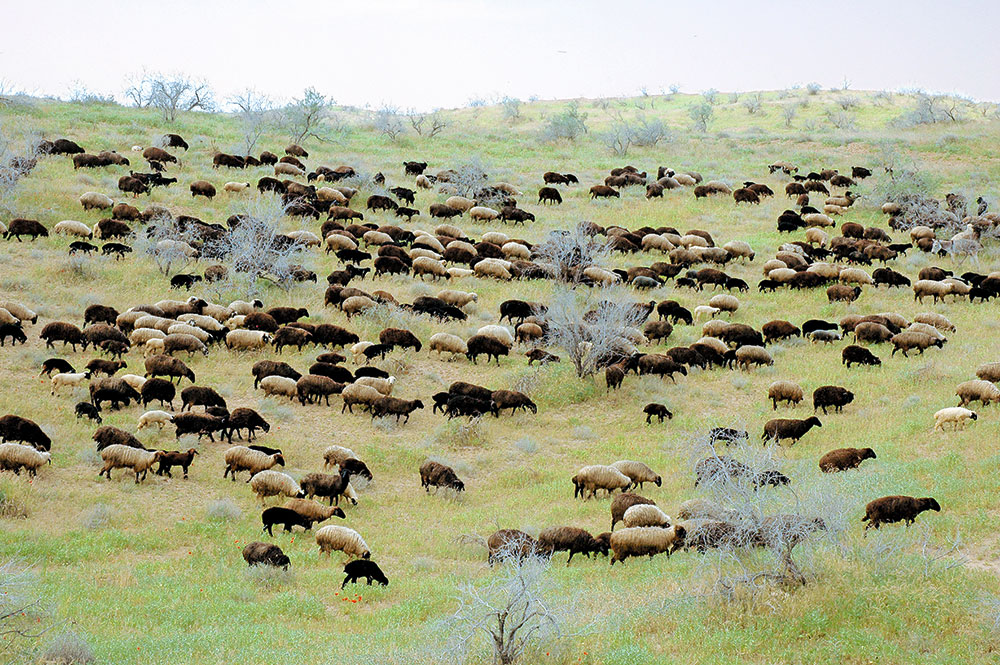The global factor within the mandate of the UN Convention to Combat Desertification is land degradation as a result of natural and anthropogenic processes, aggravated by climate aridisation. This phenomenon can be curbed by land reclamation, the restoration of soil fertility in irrigated areas and the improvement of forage capacity of Karakum pastures.
The territory of Turkmenistan is located in the zone of influence of the Karakum Desert where ecosystems are fragile, and careless interference in the “affairs of nature” can worsen the state of the soil and vegetation cover and lead to a decrease in the yield of pastures which are used year-round for animal husbandry. Millions of hectares of desert pastures annually produce hundreds of thousands of tonnes of forage products, but they are far from being used to the full extent due to their insufficient watering. However, the Karakum Desert is not only a forage base, but also an ecological environment, therefore, pasture forage consumption rates are applied, given the need to conserve biodiversity and prevent the depletion of natural pastures. A scheme is used to calculate the number of livestock per unit of land area, the so-called capacity indicator, which is one of the main concepts of the Law of Turkmenistan “On Pastures”. An increase in the number of grazing sheep requires an increase in pasture productivity through taking phyto-melioration measures. The application of science-based standards in small cattle keeping and compliance with the standards contribute to the conservation of biodiversity – the flora and fauna of the Karakum Desert.

